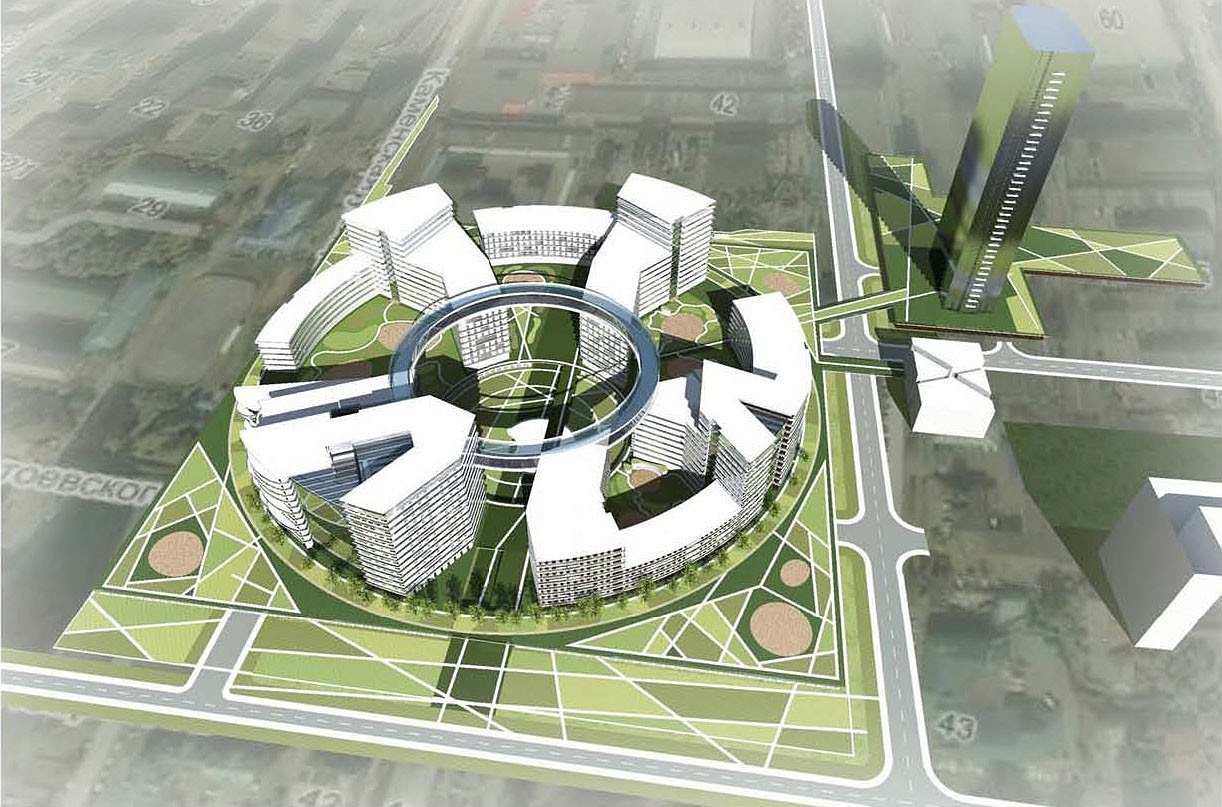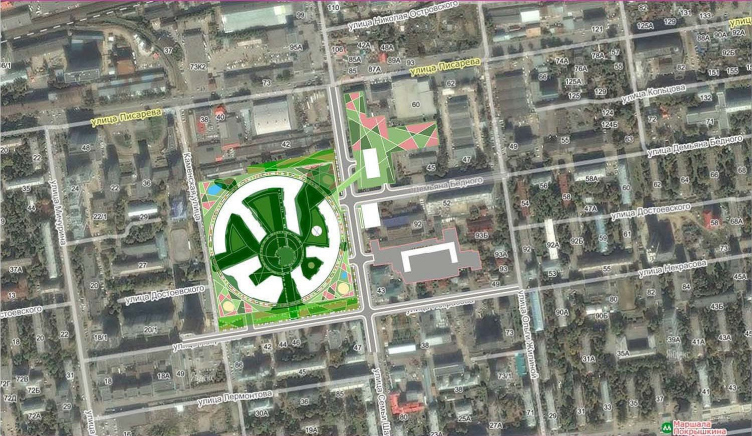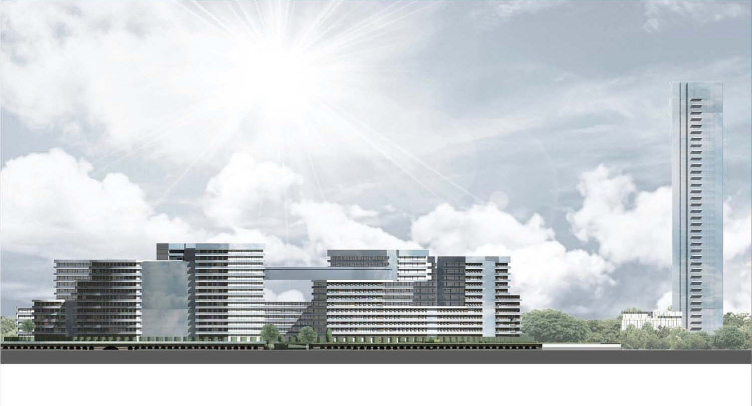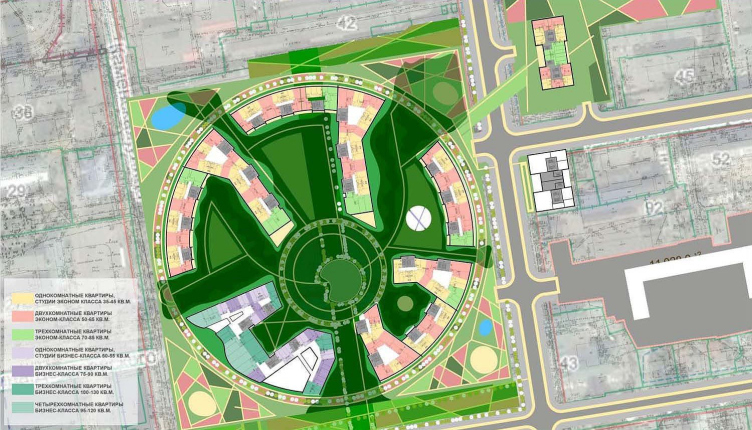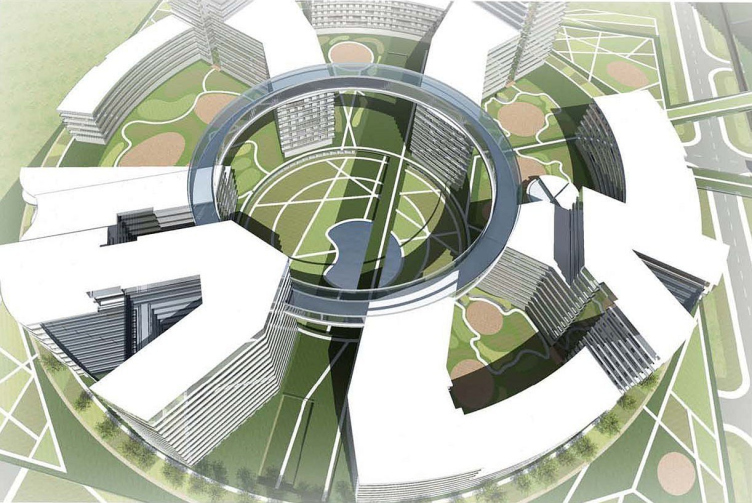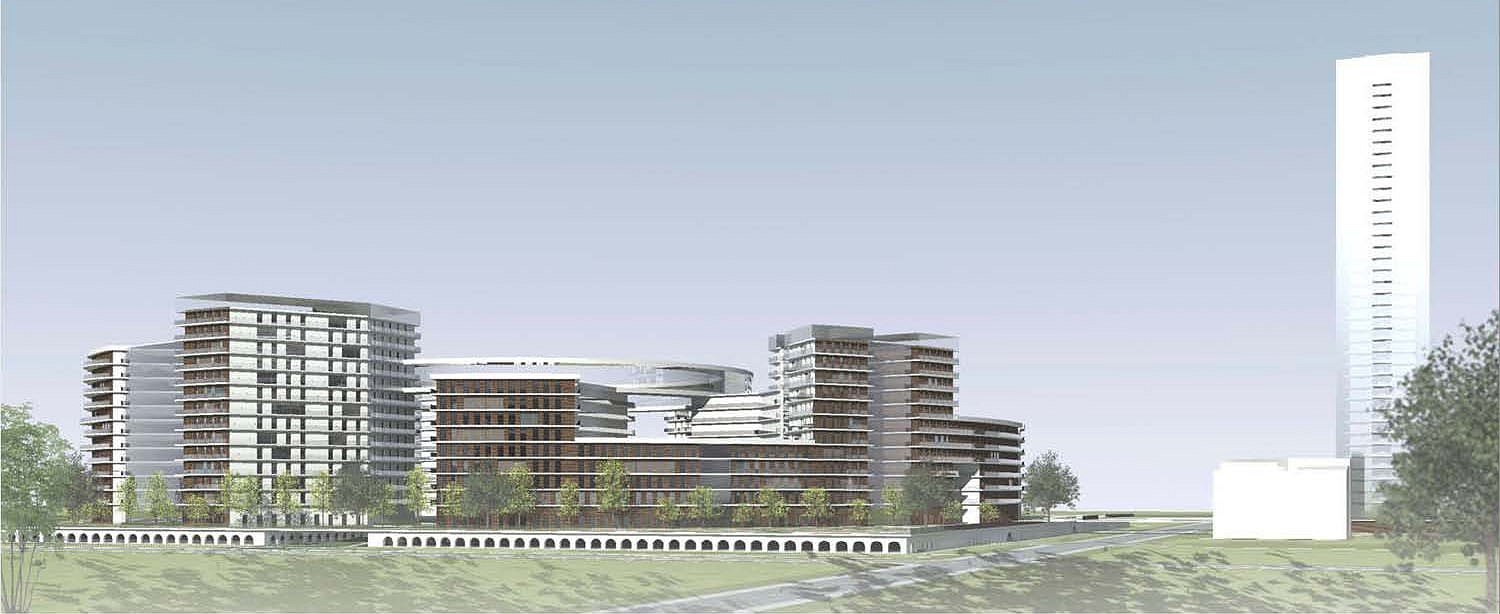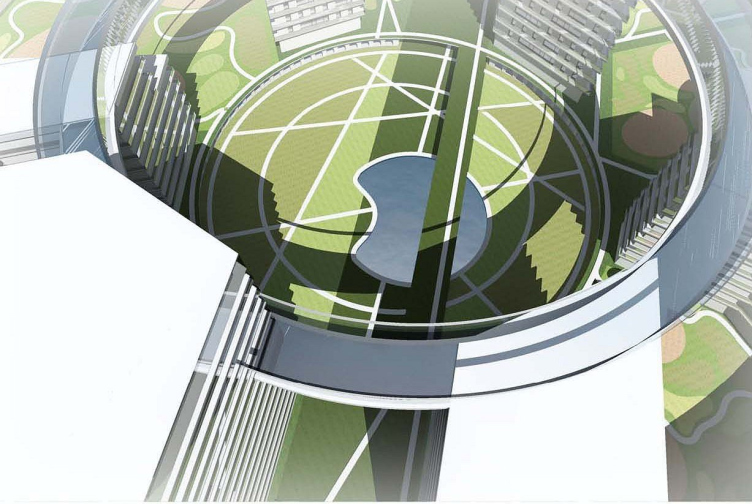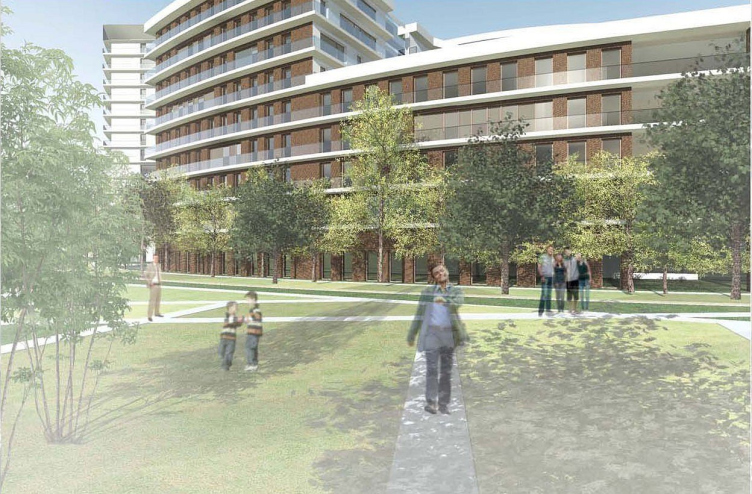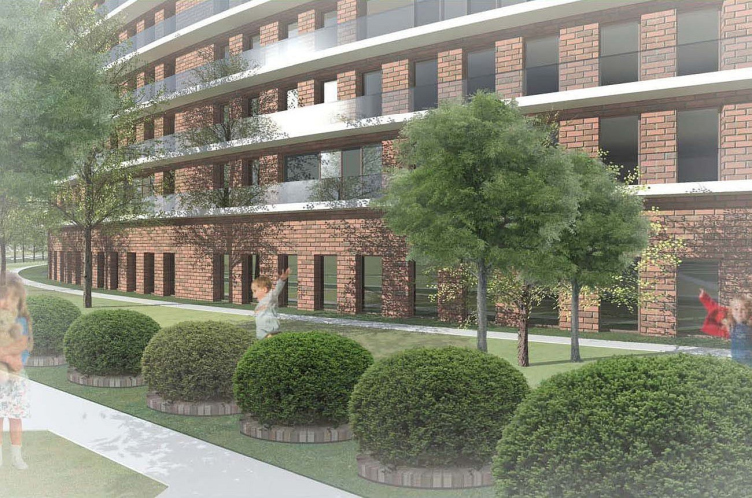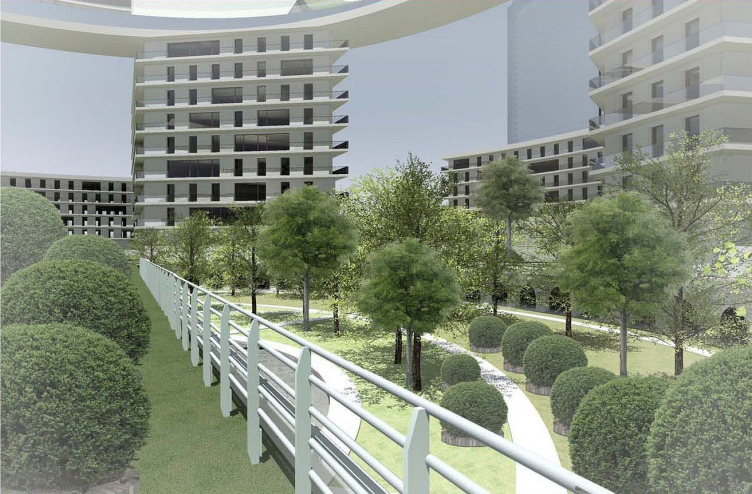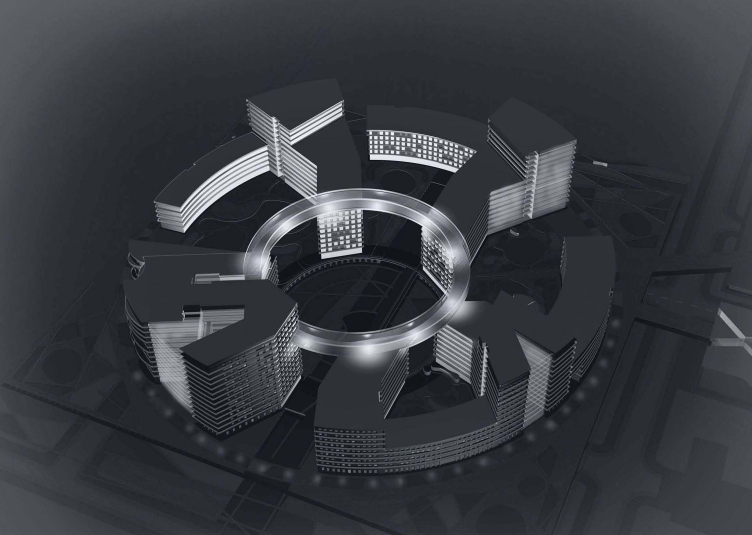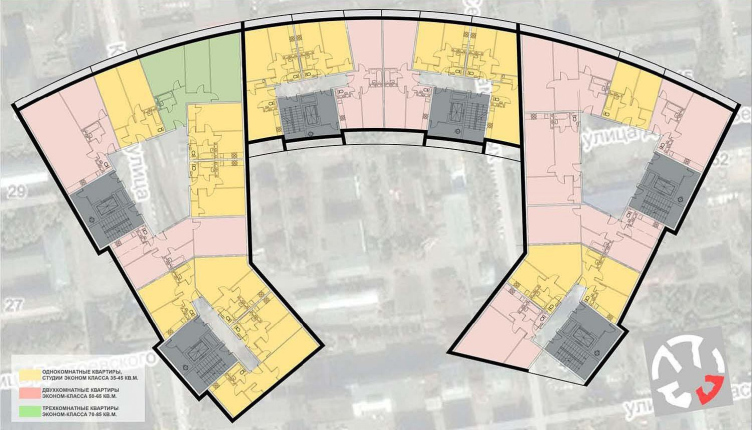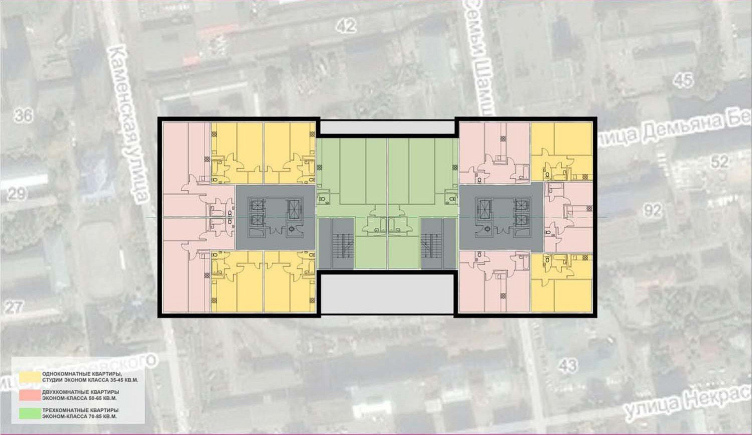What was peculiar about the
specifications was the fact that the architects were to design two buildings
fully independent of one another. This was due to the fact that the
commissioner owned not one but two land sites, one being the size of a whole
city block, and the other being a small plot on the other side of the street. “We
could not connect them in any possible way, so from the start it was all about designing
some sort of a pair, two parts of which would visually interact and at the same
time be completely independent of one another” – Aleksey Ivanov explains. The architects
almost at once decided that one of the parts of this pair should be a high-rise
volume – almost the entire
And it was mainly for this same reason that the green planting became the main theme
of the second house. In fact, the architects plant trees and shrubs along the
entire perimeter of the block – and ultimately get a giant green rectangular
carpet that they then “grow” their houses upon. The residential volumes are placed
on a single stlylobate – quite a predictable solution that lends the
opportunity to hide under the green territory the necessary number of parking
places and the necessary volumes of the infrastructure.
Inscribing this circle into the green rectangle of the park, the architects then
split it in two with a wide esplanade going from North to South. First of all,
this was a necessary move from the insolation standpoint, so as not to leave
the courtyards devoid of sunlight. Second of all, the green diagonal opens up
directly to the skyscraper standing on the opposite side of the street. Yet another
“green corridor” (yes, pun intended) is cut through to
There is also a shared area here – round in shape of course. And, because the
summer in
Tall and Round
This June, «Aleksey Ivanov architectural studio “Archstroydesign ASD”» took part in the architectural contest for the project of a multifunctional residential complex in the center of Novosibirsk. For the Siberia’s capital, the architects proposed a composition of a few houses that together from a circle.
